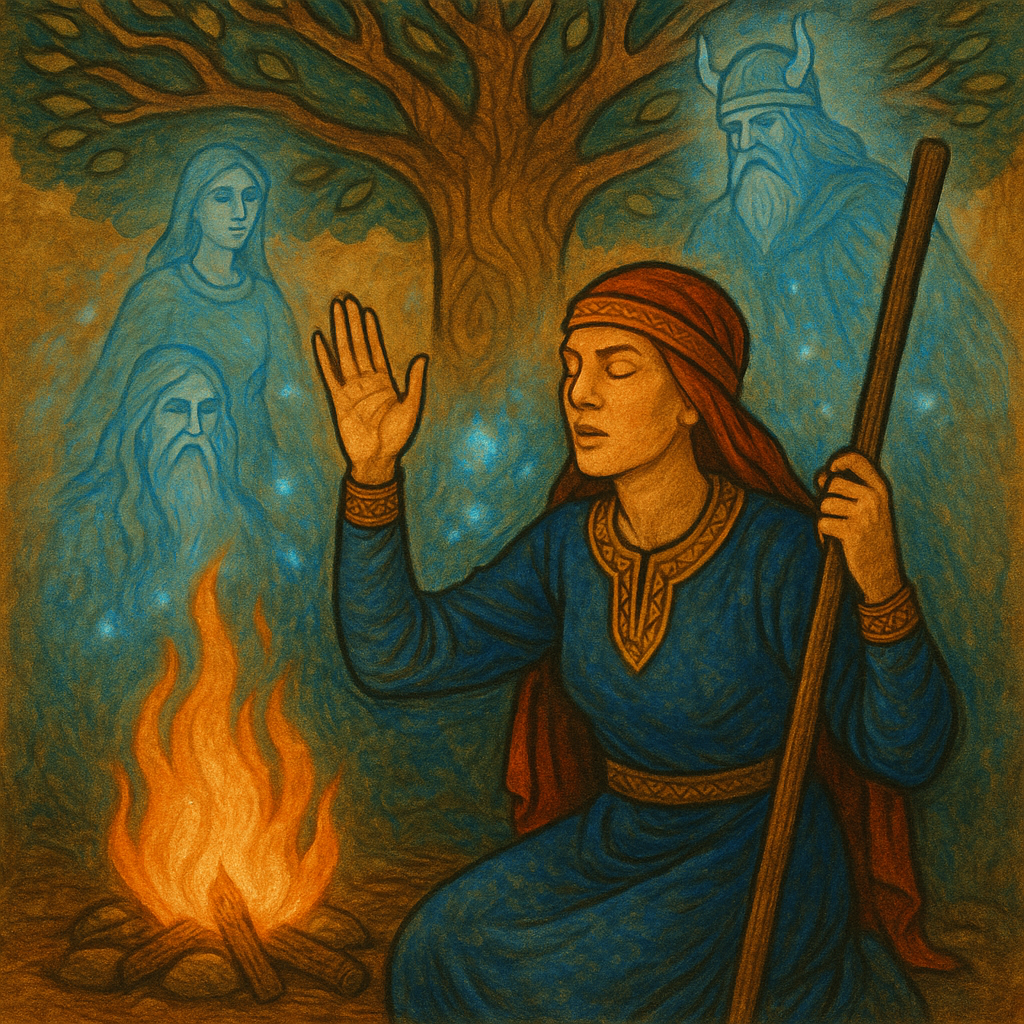Scandinavian Beliefs: Spirit Communication, Mediumship, and Spiritual Dimensions
Introduction
Scandinavia’s spiritual heritage, rooted in Norse mythology, Sámi shamanism, and later folk traditions, reveals a world where humans, ancestors, spirits, and gods interacted across multiple dimensions of existence. Spirit communication and forms of mediumship were central to maintaining harmony, seeking guidance, and ensuring protection in both daily life and the afterlife.
Scandinavian Cosmology: A Multidimensional Universe
Norse mythology describes a cosmos structured around Yggdrasil, the World Tree, connecting nine interwoven realms:
Midgard: The human world.
Asgard: Realm of the Æsir gods, including Odin and Thor.
Vanaheim: Realm of the fertility gods, the Vanir.
Helheim: The underworld of the dead.
Álfheim and Svartálfheim: Realms of elves and dwarves, spiritual beings with magical powers.
Jötunheim: Land of giants and chaotic forces.
Muspelheim and Niflheim: Primordial realms of fire and ice.
This cosmology reveals a worldview where multiple spiritual dimensions constantly intersect with human life.
Spirit Communication in Norse and Scandinavian Traditions
1. Seiðr: Norse Shamanism
Seiðr was a form of Norse sorcery and shamanic practice, often led by völur (seeresses) or seiðkonur (female mediums).
Practitioners entered trance states to communicate with spirits, ancestors, or gods.
Through chants and ritual, they delivered prophecies, healing, or spirit-guided advice.
Odin himself was said to practice seiðr, though it was culturally associated with women.
2. Ancestor Veneration
Ancestors played a vital role in guiding and protecting families.
Burial mounds (haugar) were seen as portals through which offerings could be made and ancestors consulted.
Dreams, visions, and rituals were ways the living communicated with their forebears.
3. Spirits and Elves
Landvættir (land spirits): Guardians of natural landscapes, requiring respect and offerings.
Álfar (elves): Spiritual beings linked to fertility, the dead, and ancestral connections.
Seasonal rituals and sacrifices honored these beings to ensure prosperity.
4. Mediumship and Prophecy
Norse sagas describe völur delivering oracular messages in trance during public rituals.
These mediums embodied the role of spiritual messengers, bridging human and divine realms.
Prophetic visions shaped decisions about war, agriculture, and leadership.
Sámi Shamanism and Spirit Journeys
Alongside Norse traditions, the Indigenous Sámi people of northern Scandinavia practiced shamanism:
Noaidi (shamans): Entered trance through drumming and chanting to communicate with spirits.
Trance journeys allowed contact with animal guides, ancestors, and deities.
Spirit communication was used for healing, weather control, and guiding souls of the dead.
The Sámi drum served as both a spiritual map and a medium for dialogue with unseen realms.
Techniques of Spirit Contact
Scandinavian spiritual traditions included many methods of crossing into other dimensions:
Trance and Shamanic Journeying: Practiced in both Norse seiðr and Sámi noaidi traditions.
Dreams and Visions: Regarded as direct messages from gods, ancestors, or spirits.
Oracular Rituals: Völur delivered prophecies in formal gatherings.
Offerings and Sacrifices: Food, drink, or animals offered at burial sites, sacred groves, or water sources.
Runes and Divination: Used as tools for spirit communication and receiving guidance.
Other Spiritual Dimensions and Beings
Gods of the Æsir and Vanir: Odin, Freyja, and others communicated through ritual and trance.
Norns: Female beings who wove fate, sometimes contacted through divination.
Draugar: Restless spirits of the dead who returned to trouble the living if dishonored.
Disir: Female ancestral spirits who offered guidance and protection.
Comparisons with Western Mediumship
Similarities: Trance, prophecy, ancestral contact, healing, and divination.
Differences: Scandinavian practices were integrated into religion, war, and social order, rather than private séances. Mediumship emphasized prophecy, communal wellbeing, and fate, not evidential survival.
Continuity and Modern Practice
Though Christianity transformed Scandinavia, spirit communication traditions persisted in folk culture:
Folklore of elves, land spirits, and ghosts survived into modern times.
Dreams, omens, and seasonal rituals continued in rural life.
Modern neo-pagan and reconstructionist groups revive seiðr and ancestor veneration today.
Among the Sámi, elements of shamanic drumming and spirit journeying are still preserved as cultural practices.
Conclusion
Scandinavian beliefs in spirit communication, mediumship, and spiritual dimensions reveal a world where gods, ancestors, and spirits were ever-present. Through seiðr rituals, shamanic trance, ancestral offerings, and divination, the Norse and Sámi maintained a dynamic dialogue with unseen realms.
Unlike Western Spiritualism, Scandinavian traditions emphasized prophecy, fate, and cosmic balance, weaving spirit communication into the very fabric of community, warfare, and survival.

